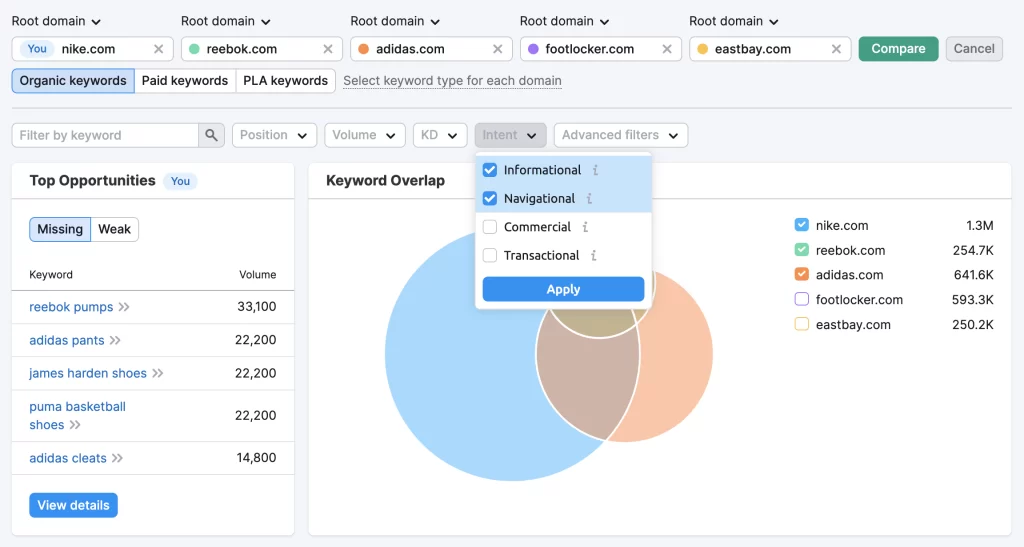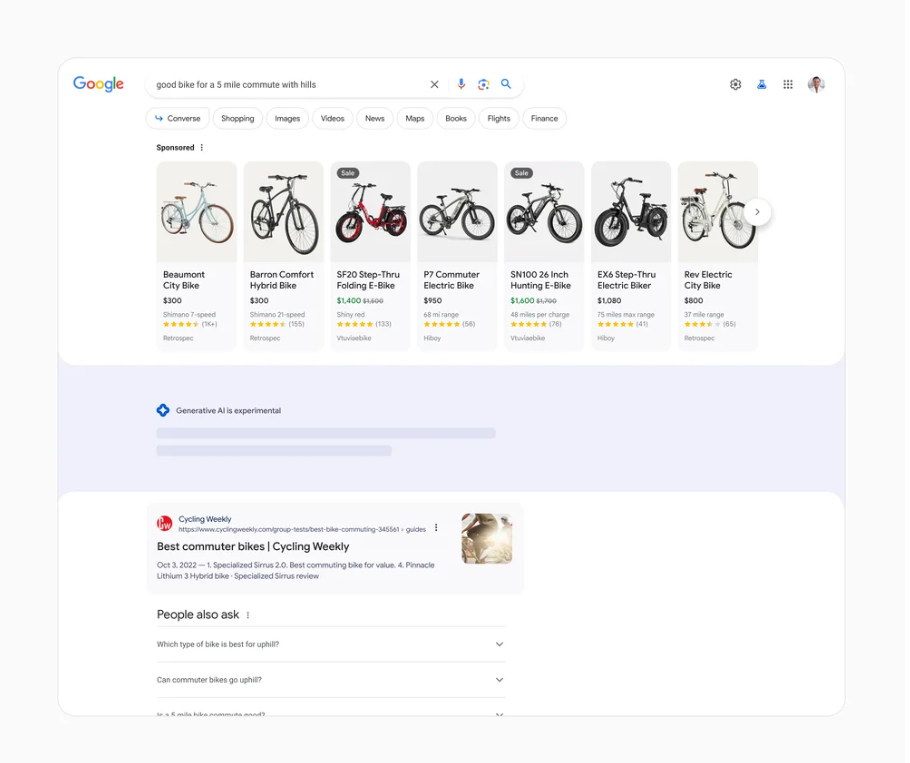How SEO has evolved from a simple ranking technique to an authentic, people-centered form of marketing. This shift has placed user experience and content quality at the center, redefining the approach to digital marketing.

Searchers find, today more than ever. And it is quality, not quantity, that really matters in online search. Every user has a precious gem to discover, a specific result to achieve. And that’s where a modern SEO ranking strategy comes in: no longer focused on ranking, but user-centered.
In years of experience as an SEO specialist, I have understood that effective marketing is authentic marketing, which offers real value to people by allowing them to exponentially extend the directional possibilities in finding, seeing, reading and listening.
Today, search engines put the user at the center: Google and others, because there are some, adapt to satisfy every request with relevant and useful results.
SEO (Search Engine Optimization) evolves accordingly, focusing on understanding keywords and user intent, aligning business interests with the needs of online searchers.
The Evolution of SEO, from technique to authentic marketing
This evolution transforms SEO from a ranking technique to a true form of authentic marketing. The goal, then, is no longer just to climb the rankings, but to understand and meet the real needs of users. This paradigm shift requires a more holistic and strategic approach, integrating SEO with content marketing and social media.

Source: Semrush blog
Starting with understanding keywords and user intent means analyzing not only what terms are searched for, but also the context and motivations behind those searches. For example, if a user searches for “best smartphones 2024,” he or she is not just looking for a list of models, but likely wants to compare features, prices, and reviews to make an informed purchasing decision. An authentic SEO approach addresses these needs by offering in-depth content, detailed comparisons, and unbiased reviews.
In addition, modern SEO requires strong integration with other digital marketing disciplines, such as content marketing, social media marketing, and email marketing. Creating valuable content that answers users’ questions and is easily shared on social media can greatly increase a website’s visibility and authority.
Search engines’ priority is user satisfaction
Search engines such as Google and Bing today have user satisfaction as their primary goal. Their rankings and algorithms are designed to offer the most relevant and useful results for each search query. This implies that SEO strategy must be geared toward creating content that effectively answers user queries and offers real value.
When a user performs a search, he or she expects to quickly find accurate and relevant information. If the results do not meet these expectations, the user may decide to use another search engine, thus reducing traffic and, consequently, advertising revenue for Google or Bing. Therefore, user satisfaction is not only a matter of ethics, but also of business.
It’s no longer enough to simply include keywords in your content; it’s critical to understand the search intent behind those keywords. For example, if someone searches for “how to cook risotto,” they likely want a detailed step-by-step guide, perhaps with explanatory images or videos, rather than a generic article about risotto.
Additionally, search engines also evaluate the overall user experience of a website. Factors such as page loading speed, ease of navigation, mobile compatibility, and site security (for example, use of HTTPS) influence the positioning in search results. A site that offers a poor user experience, even if it is rich in content, may be penalized.
The priority of search engines is user satisfaction: relevant content, optimal user experience and authority are key.
Google, for example, introduced the concept of E-E-A-T (Experience, Expertise, Authoritativeness, Reliability) to guide its algorithms. This principle encourages content creation by experts in the field in order to demonstrate authority and be perceived as trustworthy by users.
When we talk about Expertise, we refer to the fact that it is no longer enough to write generic articles; it is essential that the writer be a true expert in the field, capable of providing detailed and accurate information. Authoritativeness, on the other hand, refers to the recognition the author or website receives in its field. This can be measured through citations from other authoritative sources, positive reviews, or the presence of links from reputable websites. A site that is frequently cited by other experts in the field will be perceived as a reference, thus increasing its authority in the eyes of Google. Trustworthiness refers to users’ perception of the veracity and safety of a site’s information. A trustworthy site is transparent, offers verifiable sources, regularly updates content, and protects user data, avoiding deceptive or clickbait practices.
Finally, Experience is an equally crucial aspect. It refers to the author’s ability to demonstrate a deep and practical knowledge of the subject matter, based on direct and real experiences. Content written by someone who has experienced firsthand the situations described, or who has extensive experience in the field, will be perceived as more authentic and credible. This not only enriches the value of the content, but also increases users’ trust and their propensity to view the information as valid and useful.
An additional parameter that Google in particular but also Bing rely on to train their systems and constitute their rankings are clicks by users, which explains a kind of (false) bias that the search engine would have toward brands (a “brand bias”): but they would not have this bias if their users did not have it; it is therefore people who have to click on known brands in order for them to rank. Not an easy task for SEO specialists to make themselves mediators of these clicks, it takes patience and the results are not immediate.
Align business goals with search engine user needs
Aligning business goals with user needs is really very important. Therefore, SEO strategies must be increasingly flexible and ready to adapt to changes in search trends and user behavior.
That’s why it can be said that user experience and trust are two of the fundamental pillars of modern SEO today. An easy-to-navigate site with quality content not only improves rankings, but also creates a loyal user base.
Companies cannot afford to remain static, they must be prepared to change their strategies based on the results obtained, always with the aim of prioritising the needs of the user. For example, the introduction of new algorithms by search engines may require a rapid adaptation of SEO techniques to maintain or improve rankings. In addition, the adoption of new technologies such as artificial intelligence and machine learning can provide opportunities to further optimize SEO strategies.
Another crucial aspect is the integration of SEO with broader business objectives. This means that SEO strategies must be aligned with the marketing campaigns, sales goals and branding initiatives of the company. For example, if a company aims to expand into a new geographic market, SEO strategy should include the creation of localized content and optimization for local searches.
SEO strategy must prioritize user experience and trust
As previously mentioned, user experience and trust building are currently top priorities in an SEO positioning strategy. Creating a website that is easy to navigate, with high-quality and relevant content, not only improves search engine positioning, but also increases user satisfaction. Trust is a key factor: users must perceive the site as a reliable source of information. This approach also helps to create a loyal and satisfied user base. We are talking about two key points, user experience (UX) and trust, to keep in mind for an SEO strategy that is in line with what engines currently place as a priority, namely satisfying user needs.
User Experience (UX) at usability level
A website should be easy to navigate, with an intuitive design and fast loading times. A user-friendly interface reduces abandonment rates and increases the time users spend on the site, both factors that search engines consider positive. In addition, a well-structured site makes it easier to find information, improving the overall interaction of users with the content.
High-quality content and trust building
Creating high-quality and relevant content is another key pillar that leads to building trust from users, who essentially perceive the site as a reliable source of information, an authoritative source. Content should answer users’ questions, offer solutions to their problems, and provide accurate and up-to-date information. Well-written articles, detailed guides, informative videos, and infographics can all help create a rich and engaging user experience.
Trust is a key factor in the long-term success of any SEO strategy. For users to perceive the site as a reliable source of information, some parameters must match:
- Transparency: provide clear and transparent information about who operates the site, the sources of the information, and the privacy policies.
- Reviews and Testimonials: Incorporating authentic reviews and testimonials from satisfied customers can increase the credibility of your site.
- Quality Backlinks: Getting backlinks from authoritative and respected sites in the industry can improve your site’s authority in the eyes of search engines and users.
- Site Security: Ensuring that your site is secure (for example, using HTTPS, which is protected by an SSL certificate, or “Secure Sockets Layer”) is essential to protecting user data and building trust.
Furthermore, user interaction and engagement are important indicators of the quality of the user experience. Features such as comments, discussion forums, and social media integration can encourage users to interact with the content, creating an active and participatory community. Finally, it is essential to constantly monitor UX and SEO metrics to identify areas for improvement. Tools such as Google Analytics, Google Search Console, Piwik PRO, Matomo, Semrush, can provide valuable data on user behavior, allowing you to make targeted changes to optimize the user experience and maintain a high level of trust.
Create very practical, useful content, and diversify traffic sources
Not all users necessarily search for Web sites. Often, when they perform a search, they want to get quick and direct answers to their questions. This is especially true for informational queries, where the user wants to know a specific piece of information without having to navigate through an entire web page. For example, if someone searches for “height of the Eiffel Tower,” they would rather see the answer immediately than have to scroll through a long article.
Finally, it is essential to create practical and useful content while diversifying traffic sources. Quick answers, FAQs, step-by-step guides are winning formats. Knowing your audience, optimizing for on-page and mobile SEO, and ensuring good technical performance are now essential aspects of a successful SEO strategy.
Here are some points to keep in mind for the writing of suitable content both for the current will of Google to put users at the center in the presentation of search results (user experience, quick and pragmatic satisfaction of user needs), and both for Google SGE (acronym for Search Generative Experience) the new advanced generative search system of the Mountain View colossus.
Knowing your audience
To create content that meets your readers’ needs, it’s essential to understand who they are. It’s important to start by researching your audience to identify their interests, problems, and needs; and creating detailed profiles of your ideal users, known as “personas”, can help you better target the creation of relevant and useful content.
Quality of content
Ensure that content is original and not copied from other sources, and also offer detailed and in-depth information thus demonstrating expertise and authority on the topic. Also, keep the content up-to-date with the latest information and trends in the industry. This not only helps with search engine rankings, but also makes the site a valuable resource for readers.
On-Page SEO Optimization
To make sure that content is easily found by search engines, it is important to optimize on-page SEO, using relevant keywords in a natural way, without overdoing it (no keyword stuffing). Write catchy titles and meta descriptions that summarize the content and entice the user to click. Organize the text with headings (heading tags: H1, H2, H3) to facilitate reading and comprehension.
User experience (UX) at the level of readability
Improve the user experience by using clear and simple language, avoiding overly technical terminology unless necessary; formatting text with short paragraphs, bulleted and numbered lists to improve readability; and integrating images, videos and infographics to make content more engaging and interesting.
E-E-A-T (Experience, Expertise, Authoritativeness, Trustworthiness)
To gain the trust of readers and search engines, it is important to demonstrate experience, expertise, authority and reliability, show that you have direct experience in the field you are writing about. Demonstrate expertise by citing reliable sources and providing accurate information; build your authority in the industry through backlinks from authoritative sites and collaborations. Make sure that the site is secure (HTTPS) and that contact information is easily available.
Encourage interaction and involvement
Include calls to action that encourage users to interact with the content, encourage readers to leave comments and feedback; respond promptly. This not only increases engagement, but can also provide valuable insights into what interests readers most.
Optimization for Google SGE
To be well visible on Google SGE (innovative platform based on AI, in support of the search engine), it is useful to structure the content in a clear and organized way, use structured data to help Google better understand the content and be able to select it as a featured snippet. Provide concise and direct answers to common questions that users may have.

Source: Mannix Marketing
Technical Performance
Finally, make sure that the site has good technical performance, optimizing the website loading speed, as slow loading times can discourage users. Make sure that the site is optimized for mobile devices, as more and more people are browsing from smartphones and tablets. Also make sure that the site is accessible to all users, including those with disabilities.
Furthermore, diversifying traffic sources is essential to reduce dependence on a single source and to ensure a stable and resilient online presence. Because, although organic search traffic (from search engines) is the most important for an online business, despite its power, relying exclusively on it does not always lead to 100% coverage of the user base, in addition to the fact that since search engine algorithms change frequently they can significantly influence, even negatively, the positioning of a site. A bit like in the field of finance, diversifying, in the case of this article, traffic sources, means observing a prudent policy, expanding one’s presence on different channels, platforms, or, if we want “financial products”, such as social media, email marketing, paid advertising (PPC), and collaborations with influencers or other websites.
For example, promoting content on social media not only helps you reach a wider audience, but it can also generate direct traffic to your website. Email marketing, through sending informative and promotional newsletters, can keep existing users engaged and encourage them to return to your site. Using PPC campaigns on platforms like Google Ads or Facebook Ads can attract targeted and qualified traffic.
Diversifying your traffic sources helps reduce your dependence on a single source and build a more stable and resilient online presence. If your organic traffic fluctuates due to changes in search engine algorithms, other traffic sources can make up for the loss, ensuring continued visibility and conversions.
In conclusion, even and perhaps especially online, creating useful content and diversifying traffic sources are essential strategies of an SEO positioning activity that aims at effective and sustainable visibility. These practices not only improve the user experience, but also contribute to building a solid and versatile online business, capable of adapting to changes in the digital landscape.